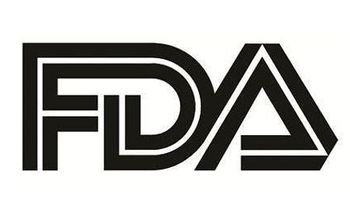
Children with HTN Have 2-times Higher Risk of Major Adverse Cardiac Events, According to New Research
Findings suggest that optimizing care for children with hypertension may reduce the risk of adult CVD, report researchers.
Children with
During a median follow-up of 13.6 years, the incidence of
In the past 3 decades, the global prevalence of HTN among children has increased nearly 5-fold, going from 1.3% in 1990-1999 to 6.0% in 2010-2014, according to corresponding author Rahul Chanchlani, MD, MSc, of McMaster Children's Hospital in Hamilton, Ontario, and colleagues.
“Childhood [HTN] tracks into adulthood and is associated with subclinical cardiovascular disease; however, there is a lack of evidence linking childhood [HTN] to cardiovascular outcomes, which may contribute to underdiagnosis and undertreatment,” Chanchlani and coauthors wrote in the study published online May 6, 2024.
Researchers, therefore, conducted the current study to analyze the long-term associated risks of MACE among children diagnosed with incident HTN compared to those without HTN. All children aged 3 to 18 years alive in Ontario, Canada, between 1996 to 2021 were identified via provincial administrative health databases and included in the analysis. Children with a previous diagnosis of HTN or kidney replacement therapy were excluded, investigators noted.
According to the study, the main exposure was incident HTN diagnosis, which was identified using validated case definitions based on diagnostic and physician billing claims. Each child with HTN was matched with 5 children without HTN (controls) based on age, sex, birth weight, maternal gestational HTN, prior comorbidities (eg, chronic kidney disease, diabetes, cardiovascular [CV] surgery), and a propensity score for HTN.
The primary outcome was MACE, which was defined as a composite of cardiovascular death, stroke, hospitalization for acute myocardial infarction (MI) or unstable angina, or coronary intervention. Secondary outcomes included individual MACE components, congestive heart failure, other CV diagnoses (including angina, atherosclerotic cardiovascular disease, ischemic cardiovascular disease, atrial/ventricular arrythmias, and peripheral vascular disease), as well as CV procedures such as cardiac surgery, vascular surgery, and device insertion.
A total of 25 605 children (median age 15 years, 57.6% boys) with HTN and 128 025 matched controls were included in the study. Chanchlani and team reported that baseline covariates were balanced after propensity score matching, and prior comorbidities were uncommon (HTN vs control cohort: malignancy, 5.7% vs 6.2%; congenital heart disease, 4.3% vs 4.2%; diabetes, 1.9% vs 1.9%).
As previously stated, children with HTN had a higher associated risk of MACE throughout the follow-up period compared to controls. Specifically, children with HTN had a higher associated risk of stroke (HR 2.7, 95% CI 2.4-2.9), hospitalization for MI or unstable angina (HR 1.8, 95% CI 1.7-2.0), and coronary intervention (HR 4.1, 95% CI 3.2-5.3) compared to those without HTN. However, researchers did not observe a difference in risk of CV death between the groups HR 1.0, 95% CI 0.9-1.2).
In addition, results showed that children with HTN had a higher associated risk of developing congestive heart failure (HR 2.6, 95% CI 2.4-2.9), other CV diagnoses (HR 1.7, 95% CI 1.6-1.8), and undergoing CV procedures (HR 2.6, 95% CI 2.3-2.8) than matched controls.
These results suggest that “optimizing the care provided to youth with hypertension may help prevent long-term adult CVD, with substantial health and cost-saving benefits,” investigators concluded. “Further research should confirm these findings among children with hypertension defined by standardized BP criteria and evaluate CVD prevention strategies, including dietary modification, lifestyle interventions, and antihypertensive medications.”
Reference: Robinson CH, Hussain J, Jeyakumar N, et al.
Newsletter
Enhance your clinical practice with the Patient Care newsletter, offering the latest evidence-based guidelines, diagnostic insights, and treatment strategies for primary care physicians.

































































































































































































































































































